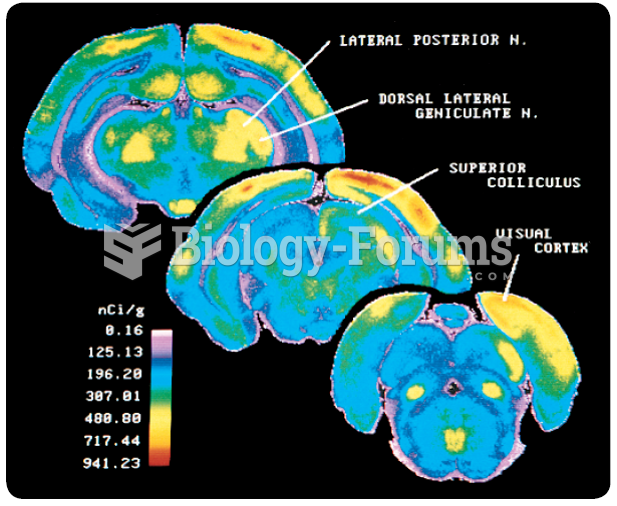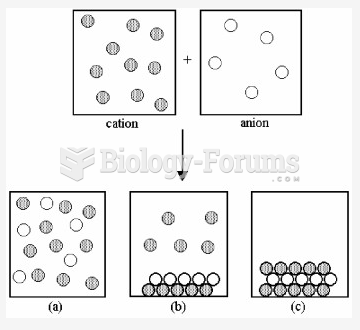|
|
|
It is believed that humans initially contracted crabs from gorillas about 3 million years ago from either sleeping in gorilla nests or eating the apes.
In women, pharmacodynamic differences include increased sensitivity to (and increased effectiveness of) beta-blockers, opioids, selective serotonin reuptake inhibitors, and typical antipsychotics.
The modern decimal position system was the invention of the Hindus (around 800 AD), involving the placing of numerals to indicate their value (units, tens, hundreds, and so on).
People who have myopia, or nearsightedness, are not able to see objects at a distance but only up close. It occurs when the cornea is either curved too steeply, the eye is too long, or both. This condition is progressive and worsens with time. More than 100 million people in the United States are nearsighted, but only 20% of those are born with the condition. Diet, eye exercise, drug therapy, and corrective lenses can all help manage nearsightedness.
Alcohol acts as a diuretic. Eight ounces of water is needed to metabolize just 1 ounce of alcohol.
 The degree of cerebral cortex folding in different mammalian species. The brains are not shown to sc
The degree of cerebral cortex folding in different mammalian species. The brains are not shown to sc
 A Mediterranean woodland in California shown during the cool moist season, when the herbaceous veget
A Mediterranean woodland in California shown during the cool moist season, when the herbaceous veget
 Fractures are diagnosed based on an X-ray of the broken bone. Shown here: a comminuted fracture of ...
Fractures are diagnosed based on an X-ray of the broken bone. Shown here: a comminuted fracture of ...




